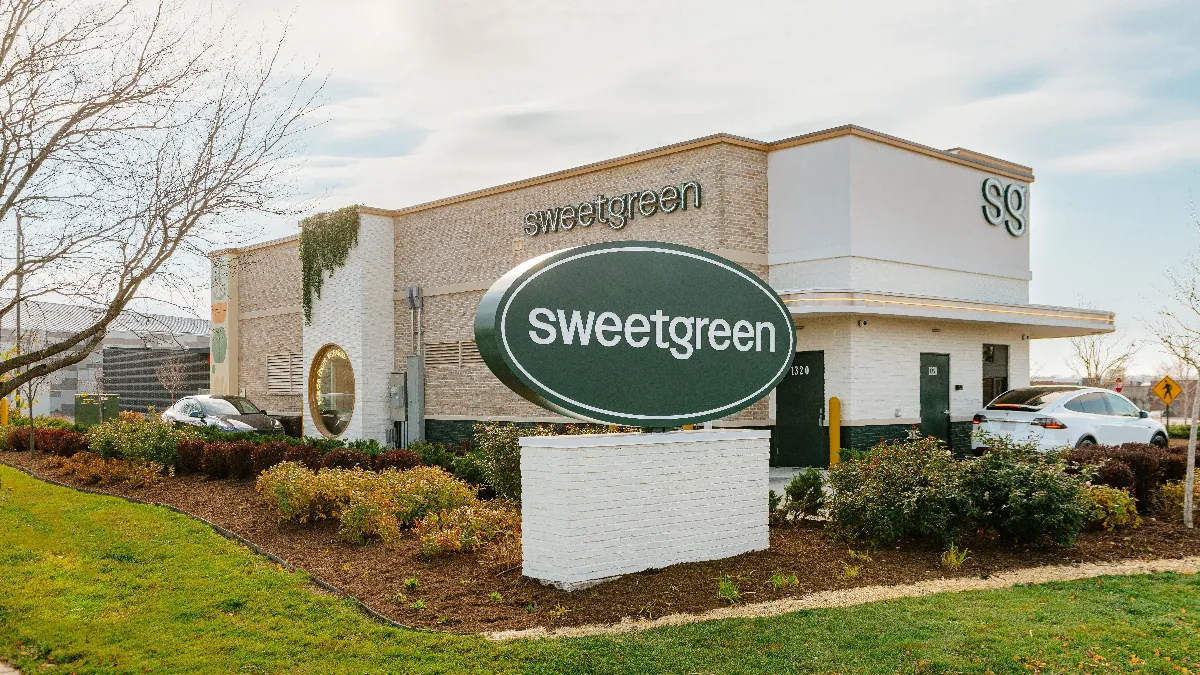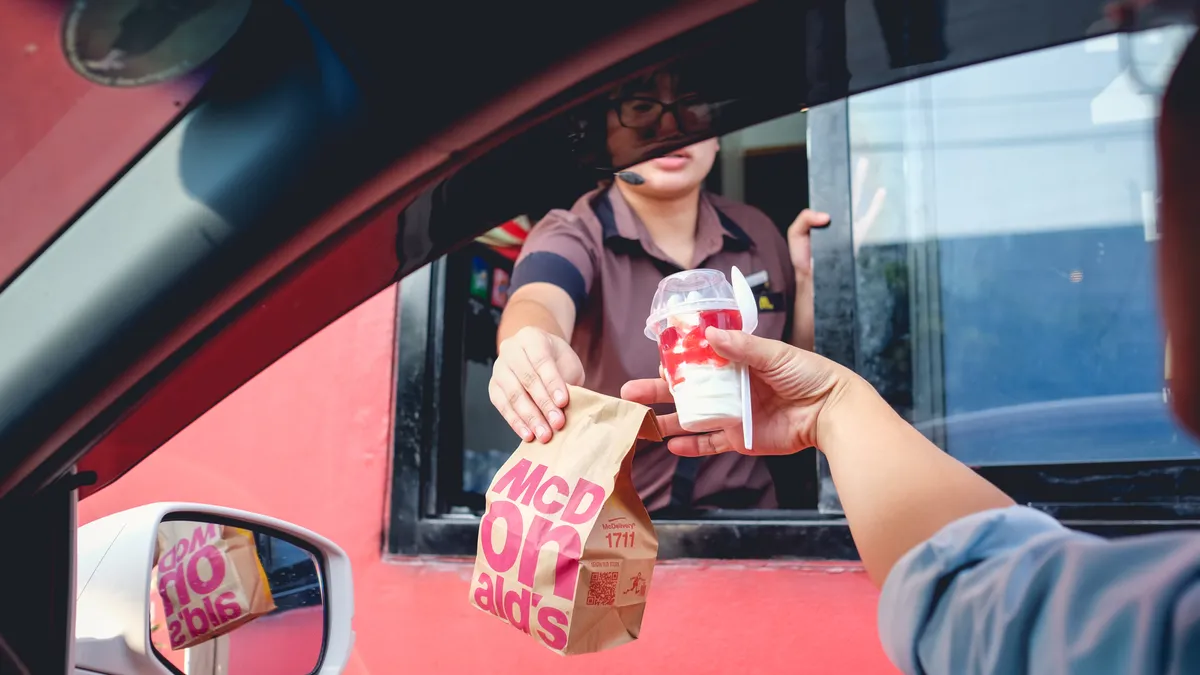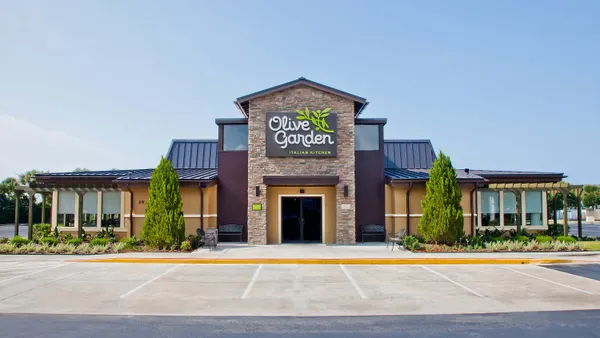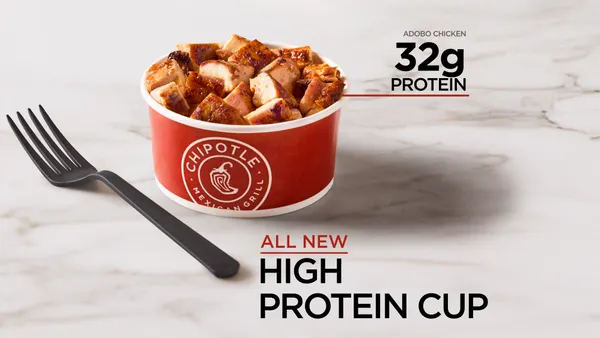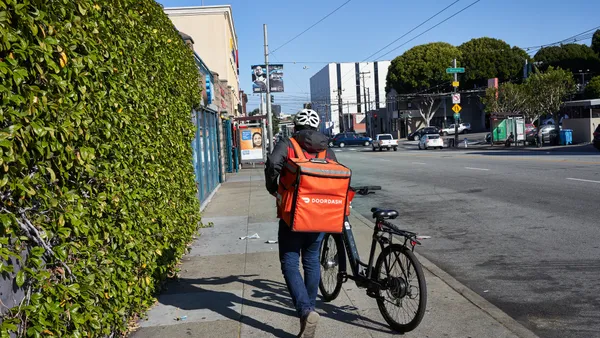Dive Brief:
- Sweetgreen’s Q1 2025 same-store sales dropped 3.1% year-over-year, the first decrease in comparable sales for the brand since it went public in 2021, according to a Thursday earnings release.
- The chain expects same-store sales growth to be roughly flat for the whole year.
- The drop is the latest in a series of same-store sales declines reported by many restaurant brands, including sectoral leaders like Chipotle, this quarter.
Dive Insight:
American businesses are grappling with declining gross domestic product and volumes of trade at ports alongside eroding consumer confidence driven by the Trump administration’s macroeconomic and tariff policies.
Sweetgreen’s comp sales decrease was driven by a 6.5% drop in traffic, offset by 3.4% price increases, Mitch Reback, Sweetgreen’s chief financial officer, said during a Thursday earnings call. Such a drop in traffic is more concerning than the headline sales comp drop would indicate.
Consumer sensitivity to prices is already high, and Sweetgreen will have little room to move on pricing without deleterious effects on its sales. The chain is already considered one of the more expensive healthy restaurant options, with salads costing $16 on average.
CEO Jonathan Neman said on the Thursday earnings call that sales trends have remained below expectations into April, reflecting a consumer pullback, particularly in the brand’s core urban markets, including Los Angeles, New York City and Boston.
Reback said that consumer hesitancy has hit frequency across all discretionary spending categories. This pullback has outweighed seasonal trends towards higher consumption.
“April has always shown a ramp in performance as seasonal patterns kick in. This is the first time we haven’t seen that lift,” Reback said.
William Blair analyst Sharon Zackfia wrote in a note emailed to Restaurant Dive that low customer frequency explained the brand’s same-store sales decline.
“To that point, the thrust of sweetgreen’s focus over the past 18 or so months has been on widening its customer funnel and occasion usage with items such as protein plates, steak, and Ripple Fries, while pivoting away from seasonal offerings (LTOs) to ease operational pressure,” Zackfia wrote.
To drive frequency and occasions, Sweetgreen is looking to its points-based loyalty program, which replaced a tiered subscription system in early April. Reback said the early weeks of the program have been a success.
“We’re acquiring about 20,000 new loyalty members a week,” Reback said. “This is pretty much more each week than the whole SweetPass plus membership base.”
Neman said the brand would also work to fill in price gaps at the lower and middle end of its menu in a bid to boost value perception. This effort will initially focus on seasonal LTOs, but could encompass changes to the core menu, Neman said.
Such changes, Zackfia said, could drive positive comps growth in the back half of the year.
Sweetgreen is working to avoid passing along tariff costs on to consumers, Reback said.
“Our team continues to diversify our supply base, avoid cost pass throughs and is focused on securing multi-year pricing agreements with key partners to further mitigate the tariff impact,” Reback said.
Severe tariffs on goods from China will make Sweetgreen’s Infinite Kitchen more expensive to install. The automated makeline currently costs $450,000 to $550,000 per location, Reback said, and 15% of its cost is driven by components made in China.
But, Reback said, the equipment “remains accretive to our return on capital due to the long-term labor savings, consistency and improvements in throughput.”


